Boulder Crew
Time flies when you’re smashing rocks! Week two for Boulder Crew gave us an opportunity to showcase how hard we can work, and what we can achieve as a team.
(Insert img5 caption: Boulder Crew, best crew!)
This past week, we spent our time at the South Boulder Creek trail in the James Peak Wilderness. Our focus for the week was the construction of a turnpike (raised section of trail intended to mitigate water erosion damage). To properly improve the section of trail we were working on, we were required to build a massive turnpike, roughly 40 ft and counting! Although turnpike construction may sound simple, it requires significant time investment in materials gathering. We spent the majority of our days collecting dirt, and hauling massive 100 lbs plus rocks. Overall, the construction of a turnpike of this magnitude was highly rewarding for all involved—many thanks were received from hikers, and of course their dogs!



Perhaps the most exciting aspect of working on the South Boulder Creek trail is the abundance of historic artifacts in the vicinity. This trail starts at the Moffat train tunnel, which travels roughly six miles through a mountain. The tunnel was built in the 1920s, and greatly influenced historic human activity around the James Peak Wilderness. Within only a few miles of the trailhead, there are about six historic structures. A hiker that had grown up in the area took some time to share what she remembered about it from her childhood. According to her, one of the old cabins along the trail was built in the 1890s, and was the birthplace of the local sheriff that worked during her childhood! She also shared with us that the site we were working around was the old Jenkin’s Saw Mill, constructed and operated to provide wood for the Moffat train tunnel. Furthermore, we learned that there used to be botany researchers based out of the valley working throughout the mountains. After learning of this, we began to piece together what the little human made items we found were used for. Among interesting things that we found were: leather work gloves, moccasins, whiskey bottles, leather fittings, square head nails, glass scientific apparatuses, and metal cabinet handles.
We rounded off this already full week with a little mini vacation to the Sangre De Cristo range in southern Colorado. Friday morning, we summited Humboldt Peak, enjoying the beautiful views of the many rugged peaks around. We played as hard as we worked this week and had a great time doing it. Cheers to many more successful weeks for Boulder Crew!
-Zach (Boulder Crew Leader)
Rawah Crews
The Rawah Mega Crew started week two off sharp. Chris from the USFS Canyon Lakes Ranger District Trail Crew commuted to Stub Creek on Monday and Tuesday to train and certify the crew as type II crosscut sawyers. Training consisted of two scenarios of bucking (sawing fallen trees) to ensure that our crew’s abilities are up to par.
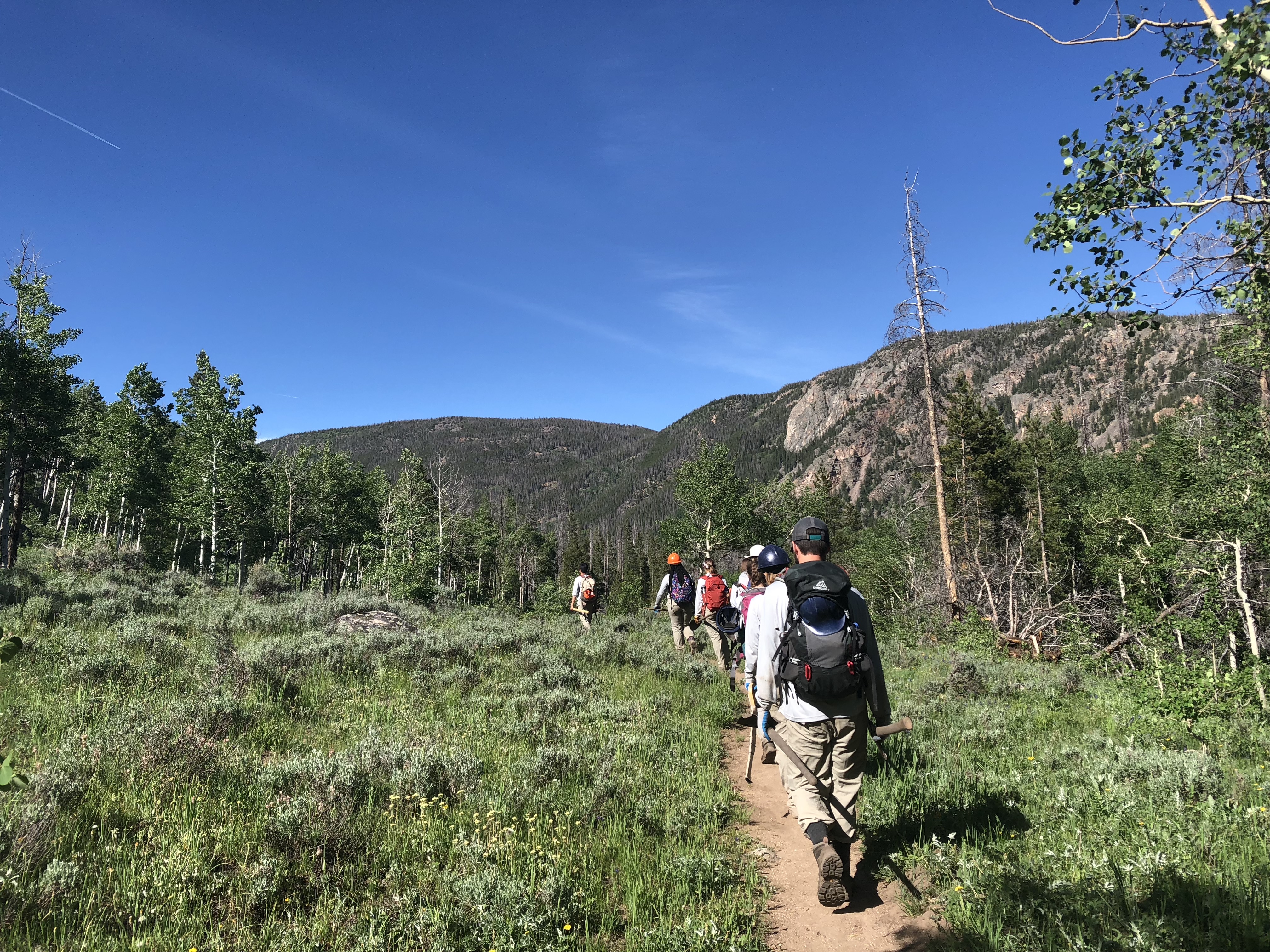
Following our two days of training, we began work in the Rawah Wilderness on the McIntyre Trail. To start work, we had two sets of crosscut teams, as we expected to encounter many down trees. The other six crewmembers were given the task of repairing drainage structures on the trail to mitigate water erosion. 
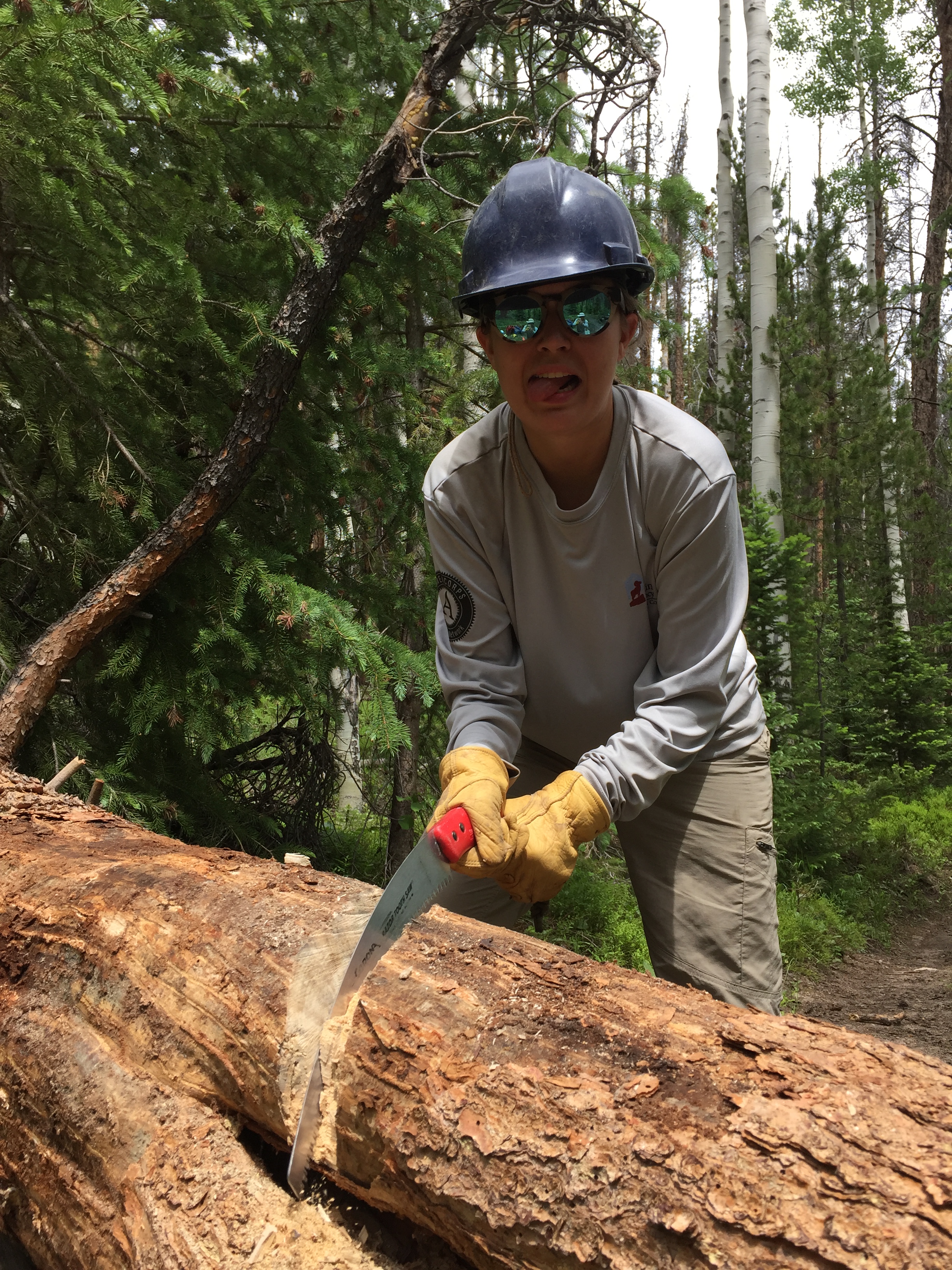
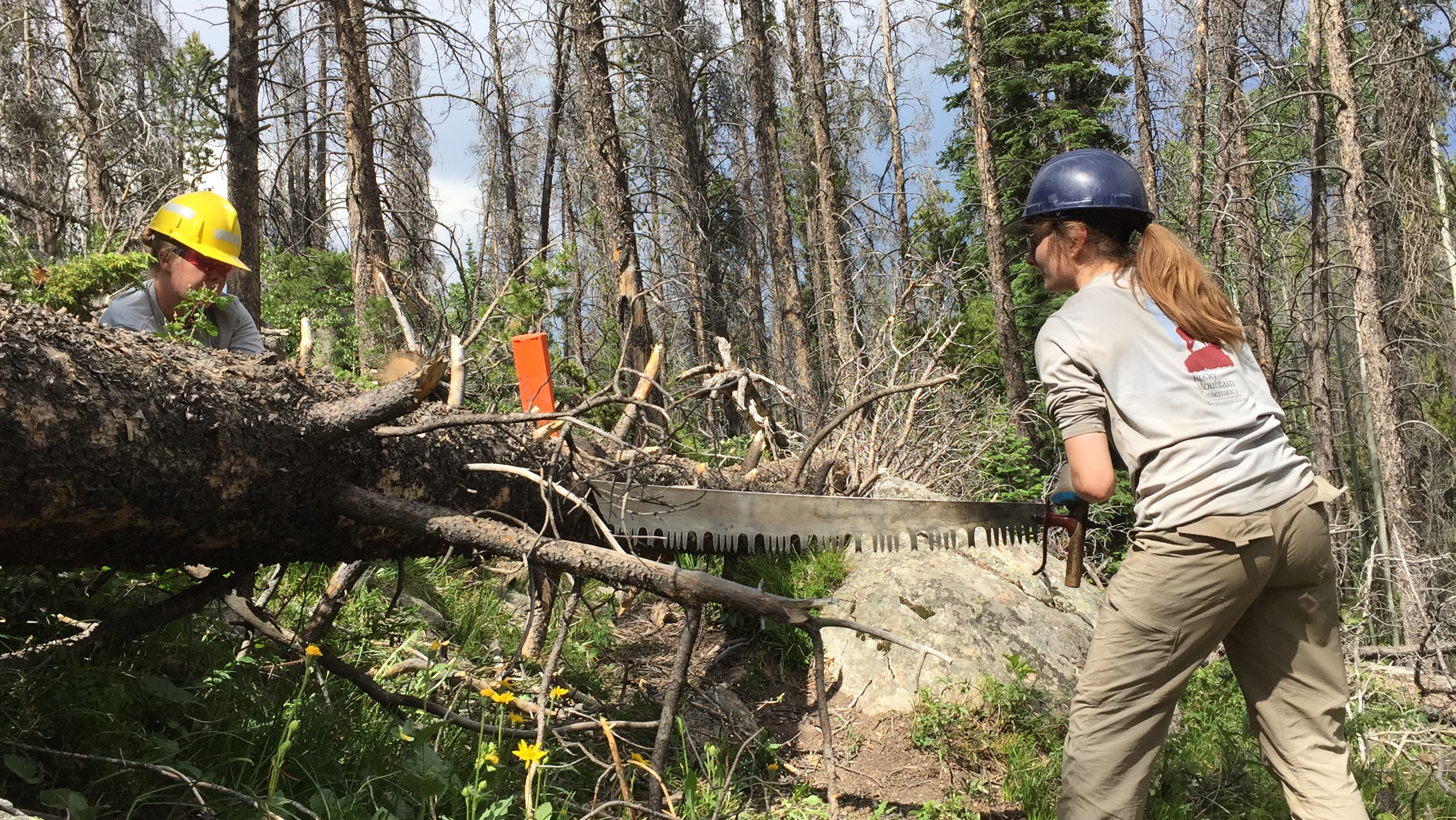
As the week progressed, we were able to get ahead of schedule. We had originally intended to be on McIntyre for two days, but due to the distance covered in our first day we decided to start the Link Trail on Thursday. Because of this, we had to do a little bit of midweek planning, as pictured below. 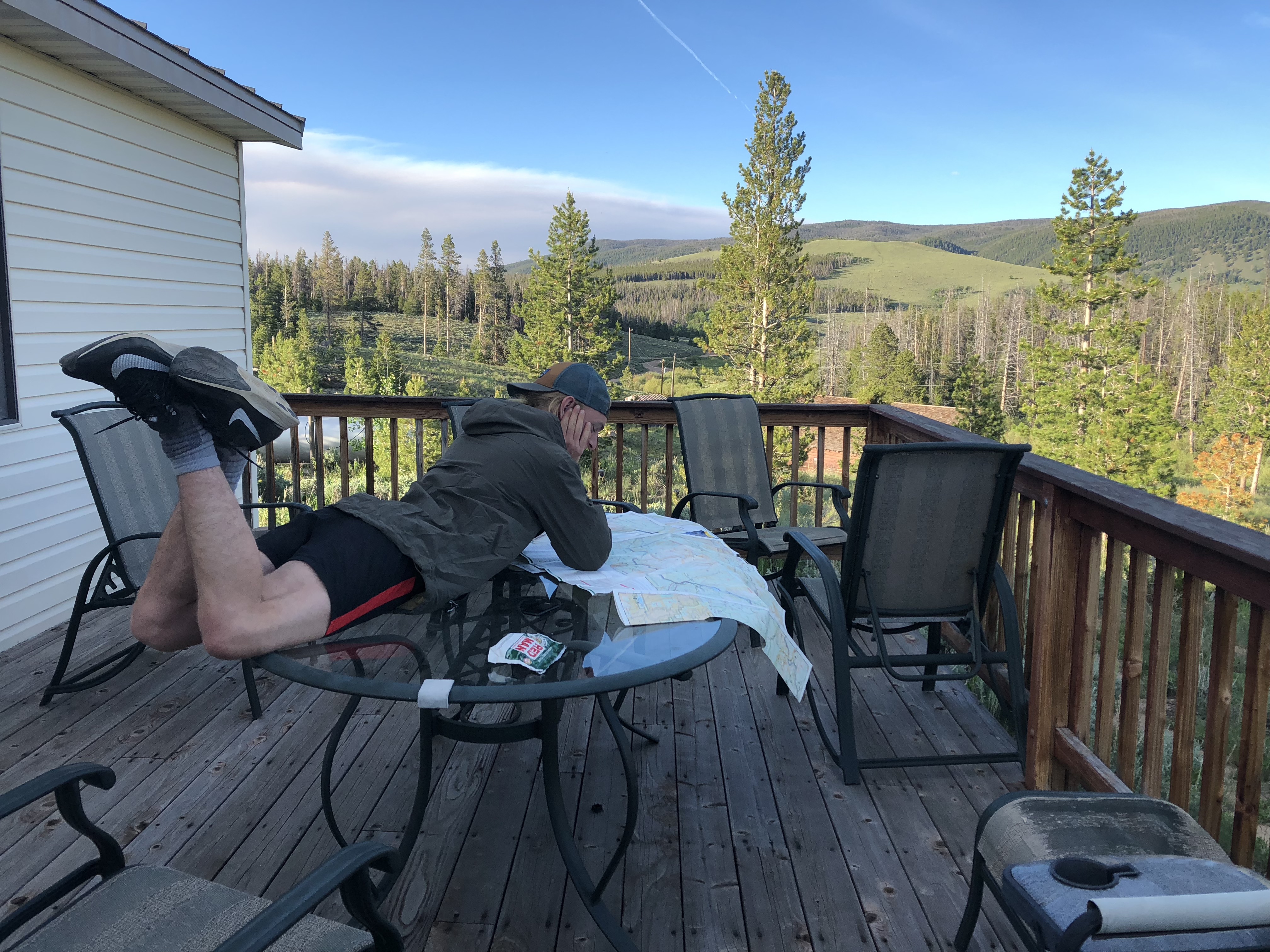
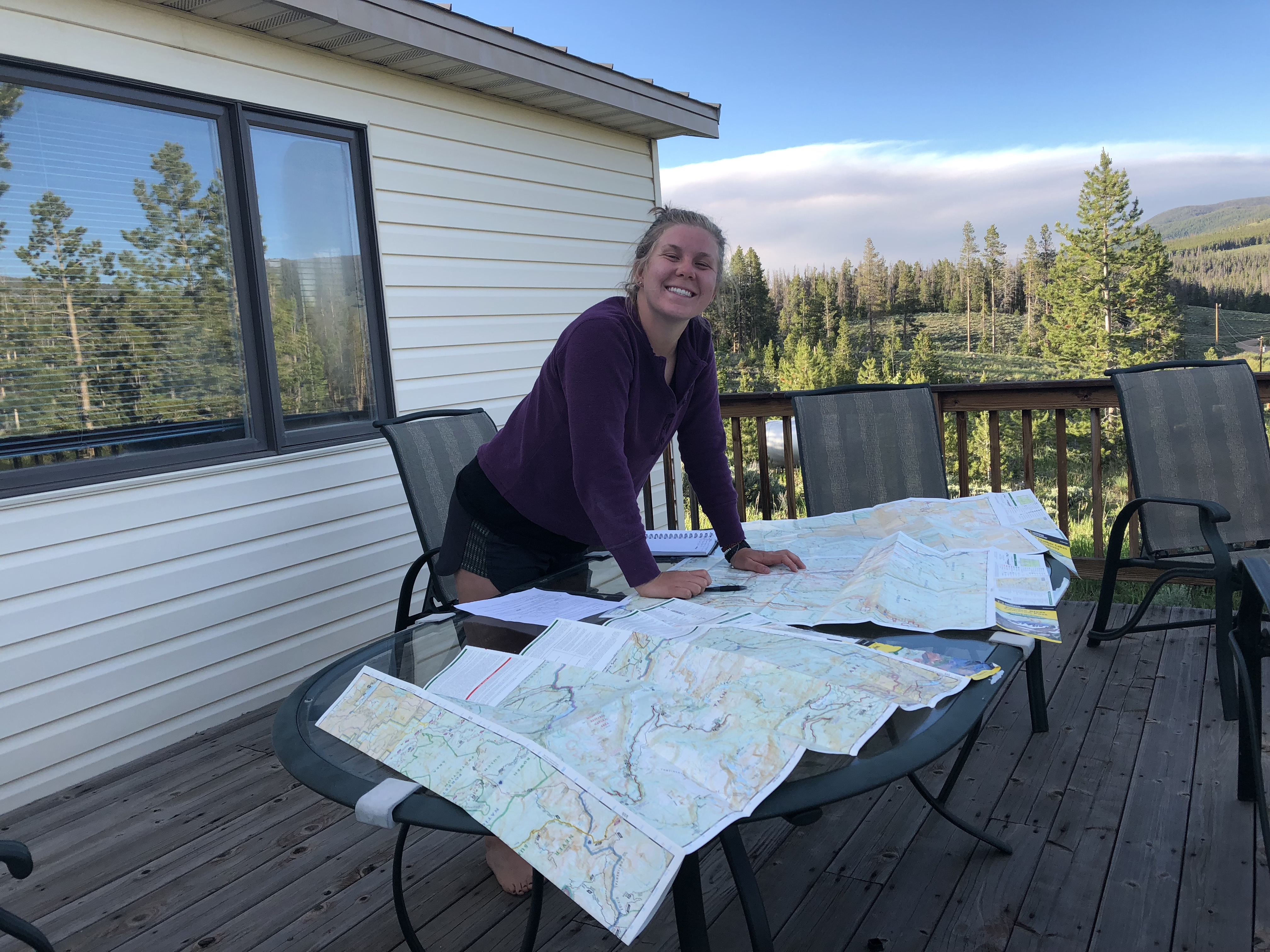
Overall, we had a successful week here in the Rawah Wilderness and our expectations were exceeded! To wrap up a week of hard work, the mega crew is heading to Laramie, WY to visit and explore the area and then to Steamboat Springs, CO to enjoy some hot springs. 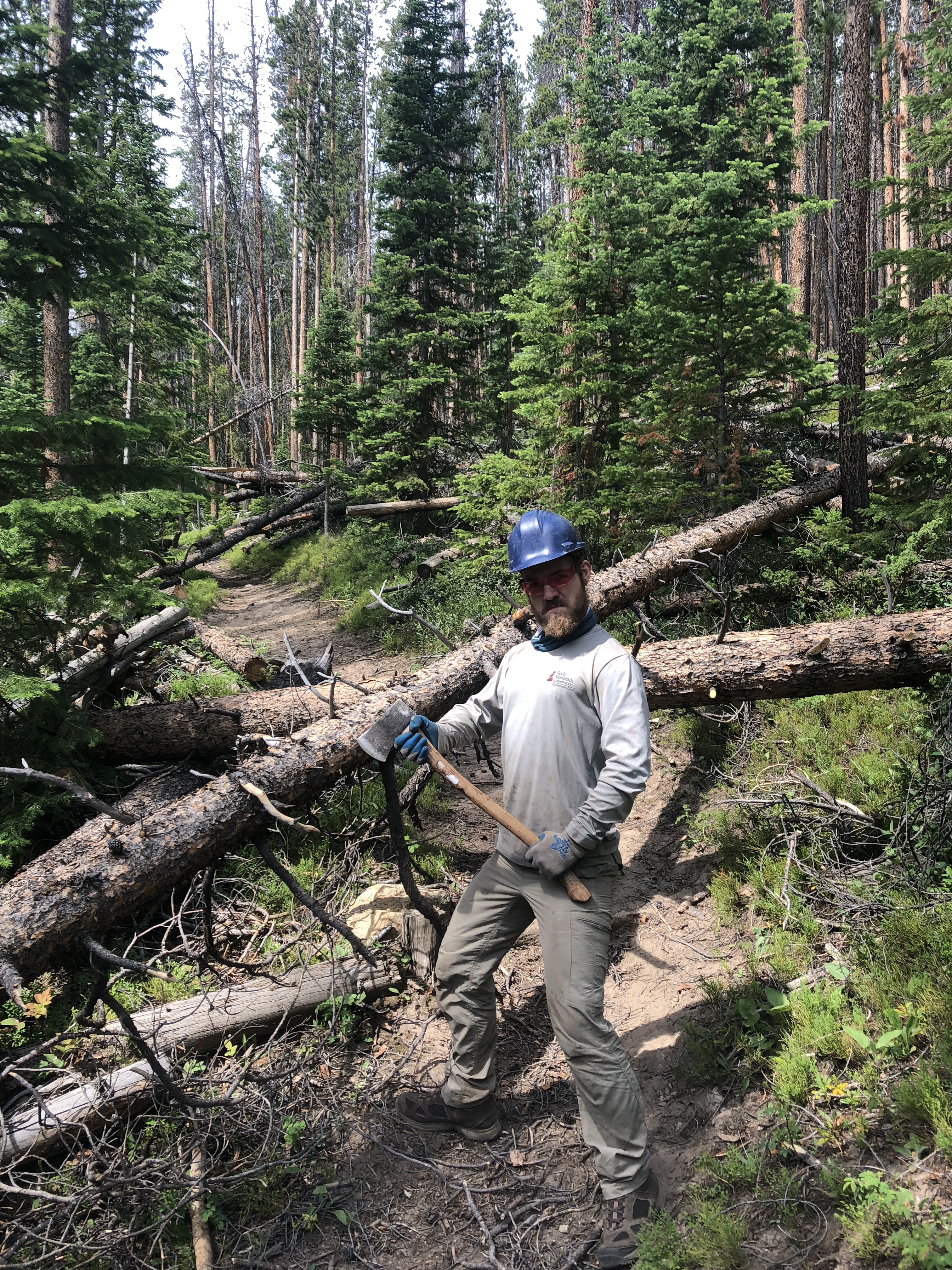
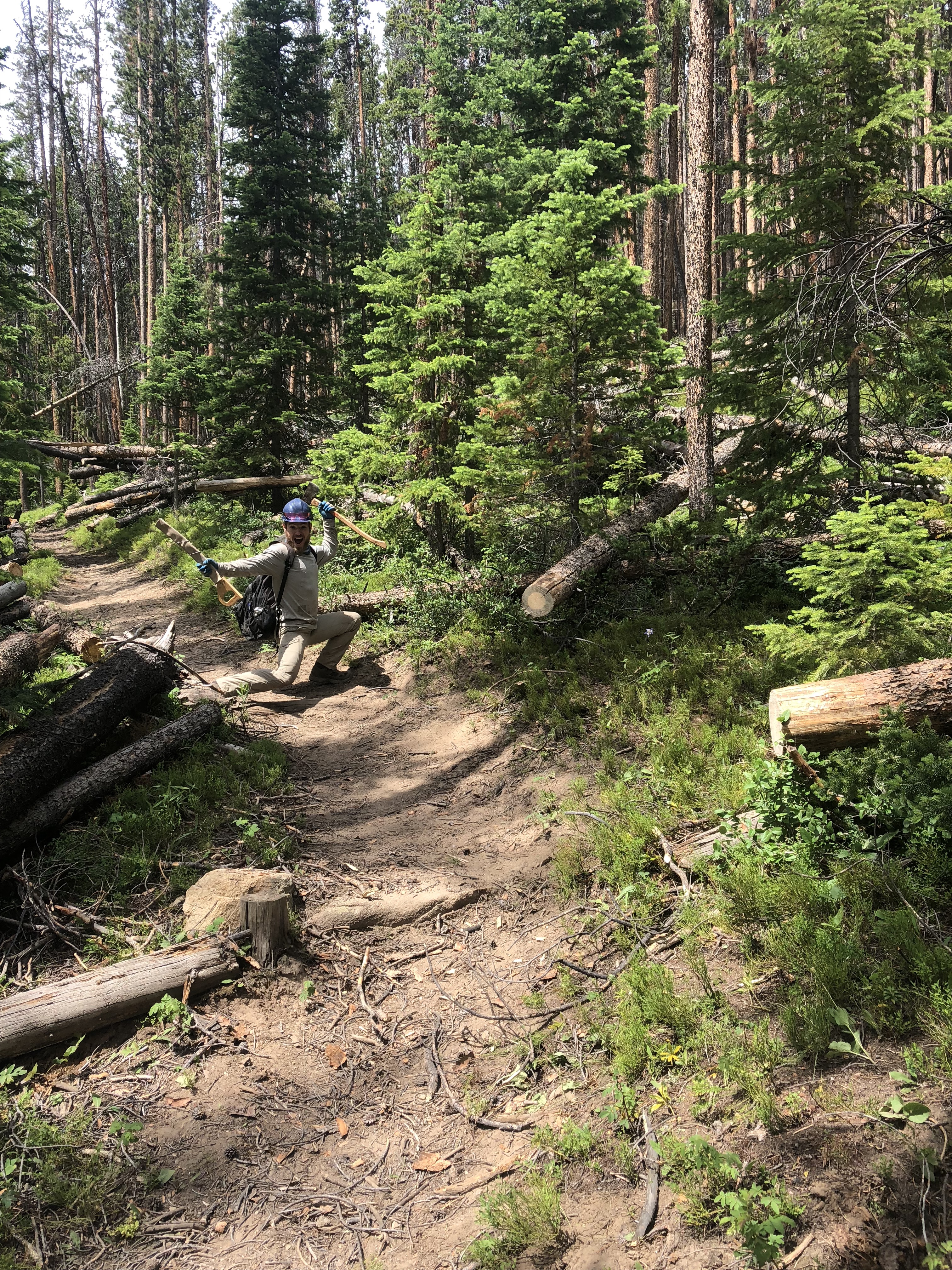
Tune in later for next week’s adventures!
-Noah and Jordan (Rawah Crew Leaders)
Estes Crew
Purge the Spurge! This was the motto of Monday as we walked through a large field near Fall River Road. Our day started out in the NPS greenhouse meeting with the vegetation crew to talk about their goals for the week and safety. We then met with Glenn, expert herbicide sprayer and vegetation crew technician, at the Moraine “boneyard” to calibrate our spray packs. Our crew couldn’t help but sing the Ghostbusters theme song as we walked around spraying water out of large white packs on our back. The purpose of this was to see how much liquid was used when spraying a certain area. If too much or too little water got used, we had to adjust the drop size and how quickly we were moving. This helps insure that the invasive plants will die, but not too much herbicide will be used.
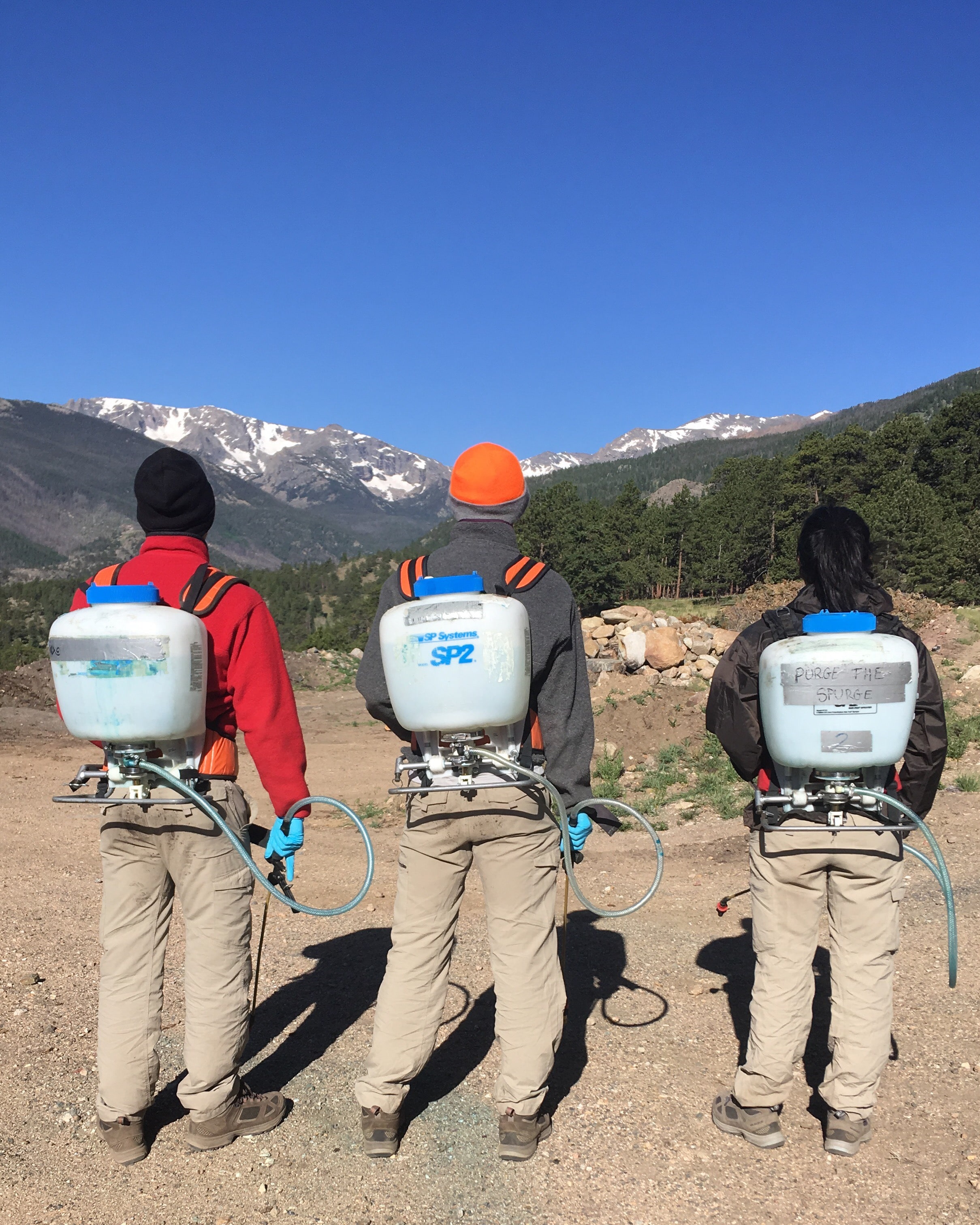
After calibrating our sprayers, the Estes crew moved to a field next to the Fall River entrance to Rocky Mountain National Park. Our goal was to spray the invasive species, Leafy Spurge, with herbicide. This species loves wet soil and sunlight. As we scanned the field for Leafy Spurge, the vegetation crew was able to teach us about other types of plants, such as wallflowers and lupins. At certain points we had to dodge through Aspen Trees to look for spurge. By the end of the day 7.5 acres of land had been covered.
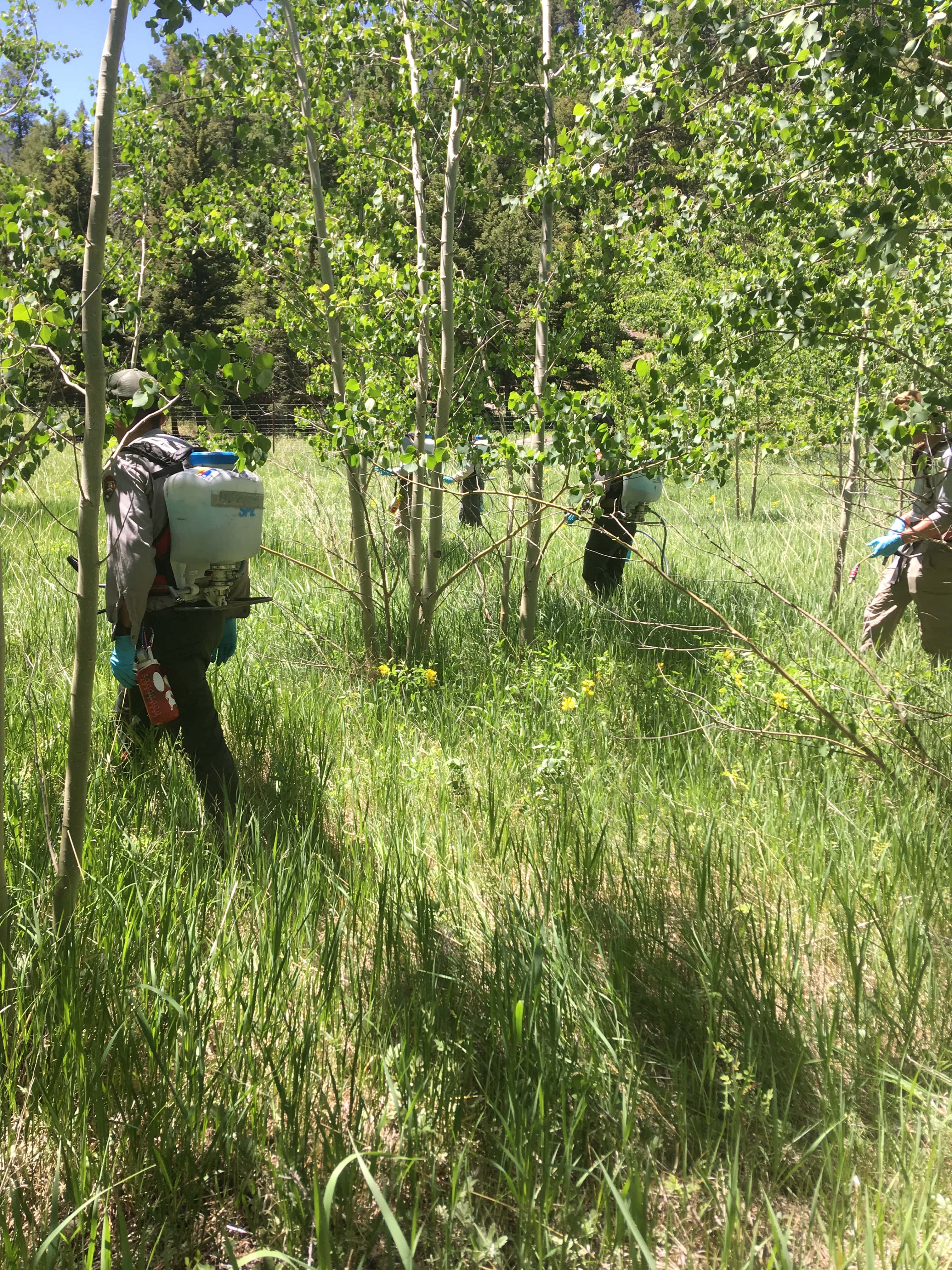
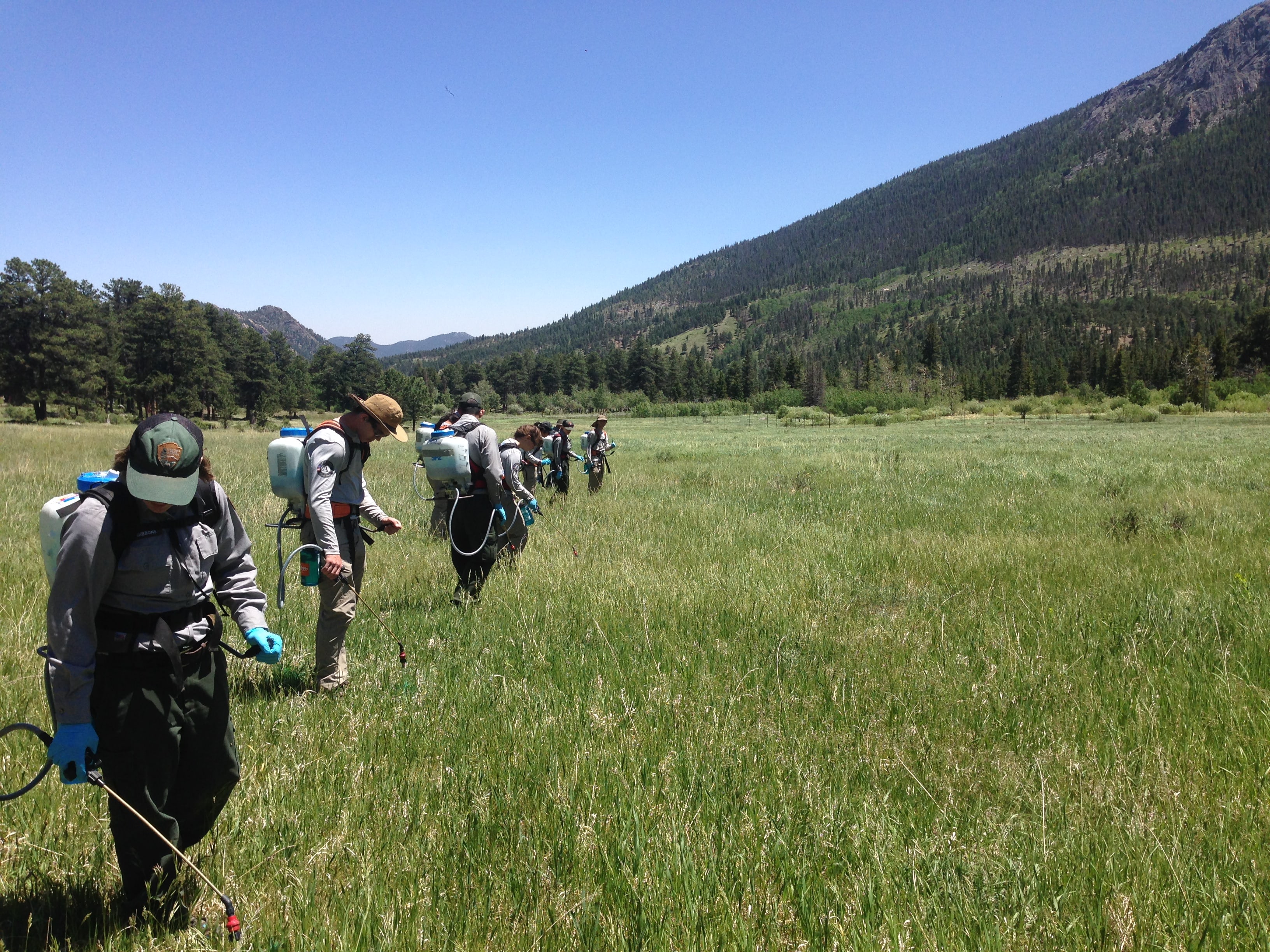
Tuesday was a training day for us. Our crew had the opportunity to join the National Park Service seasonal training day at the YMCA of the Rockies. In the morning, we learned about the different branches of service, safety, harassment, and park rules. One of our groups favorite quotes of the morning came from Barry Sweet, a worker in the wilderness office, referring to the Rocky Mountain Nation Park:
“We continue to protect this treasure and people won’t know our names, but that’s okay because it isn’t about us.”
In the afternoon, the seasonal workers were given an orientation around the National Park Service headquarters. Groups rotated stations to learn about each division and what kind of service was provided there. We learned about the museum, the greenhouse, the research center, the search and rescue cache, the fire station, as well as the trails and signs building.
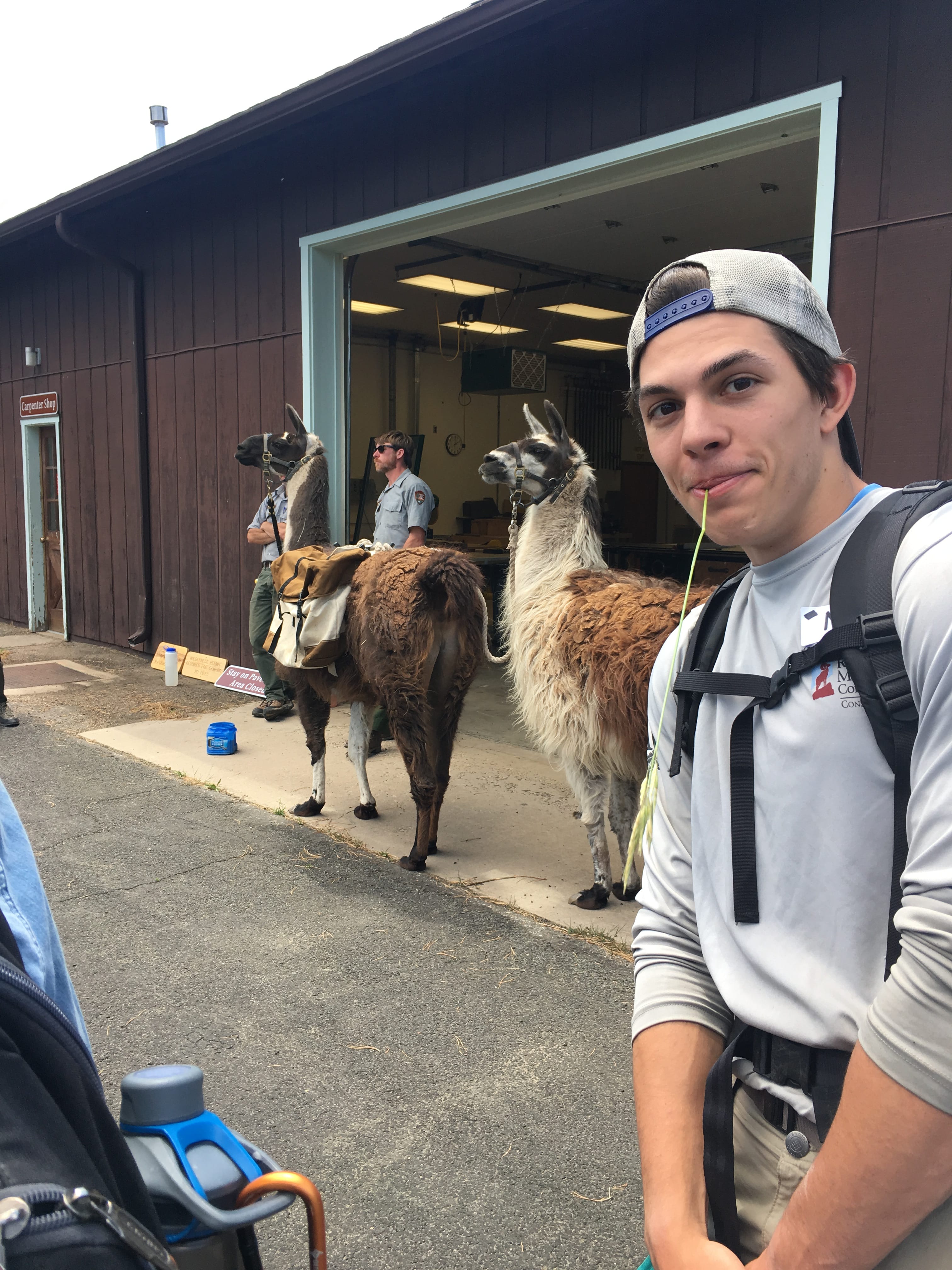
At the end of the day we went back to the greenhouse and weeded through baby Ponderosa pine and willow trees.
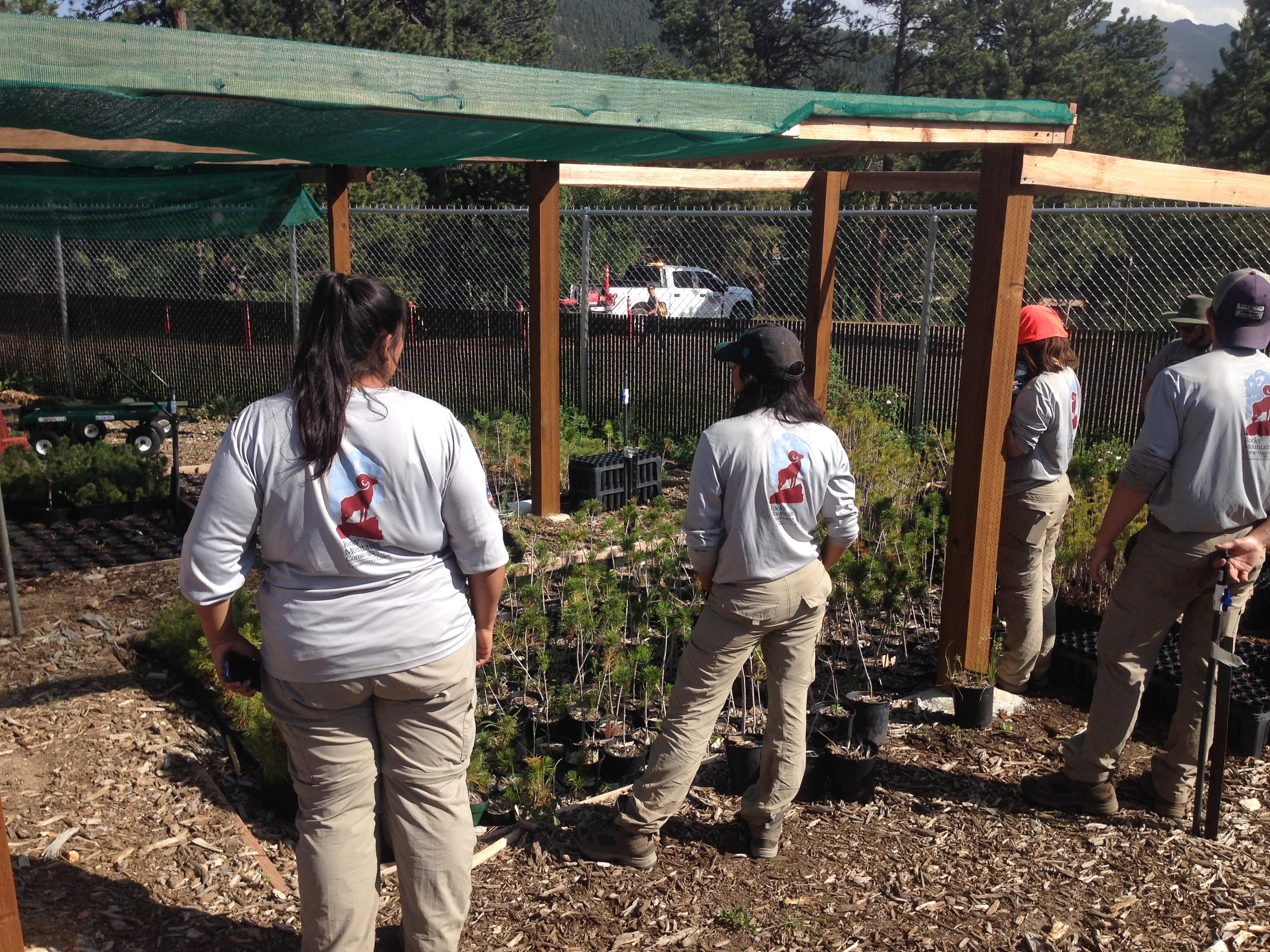
The next two days were spent working on a wetland mitigation project by Sprague Lake trailhead. Over a 100 years ago the area was a wetland, but soon got converted to a horse stable. Since then the stable was moved across the lake, leaving the old wetland empty and full of dry soil.
Our job was to seed and blanket the soil in hopes that one day a healthy wetland would grow there. On Wednesday we carefully raked the slope of the land to help make an even terrain for the seeds to be thrown down on. Nate, Maximo, and Curtis worked a trench that was to hold the top of the erosion blanket.
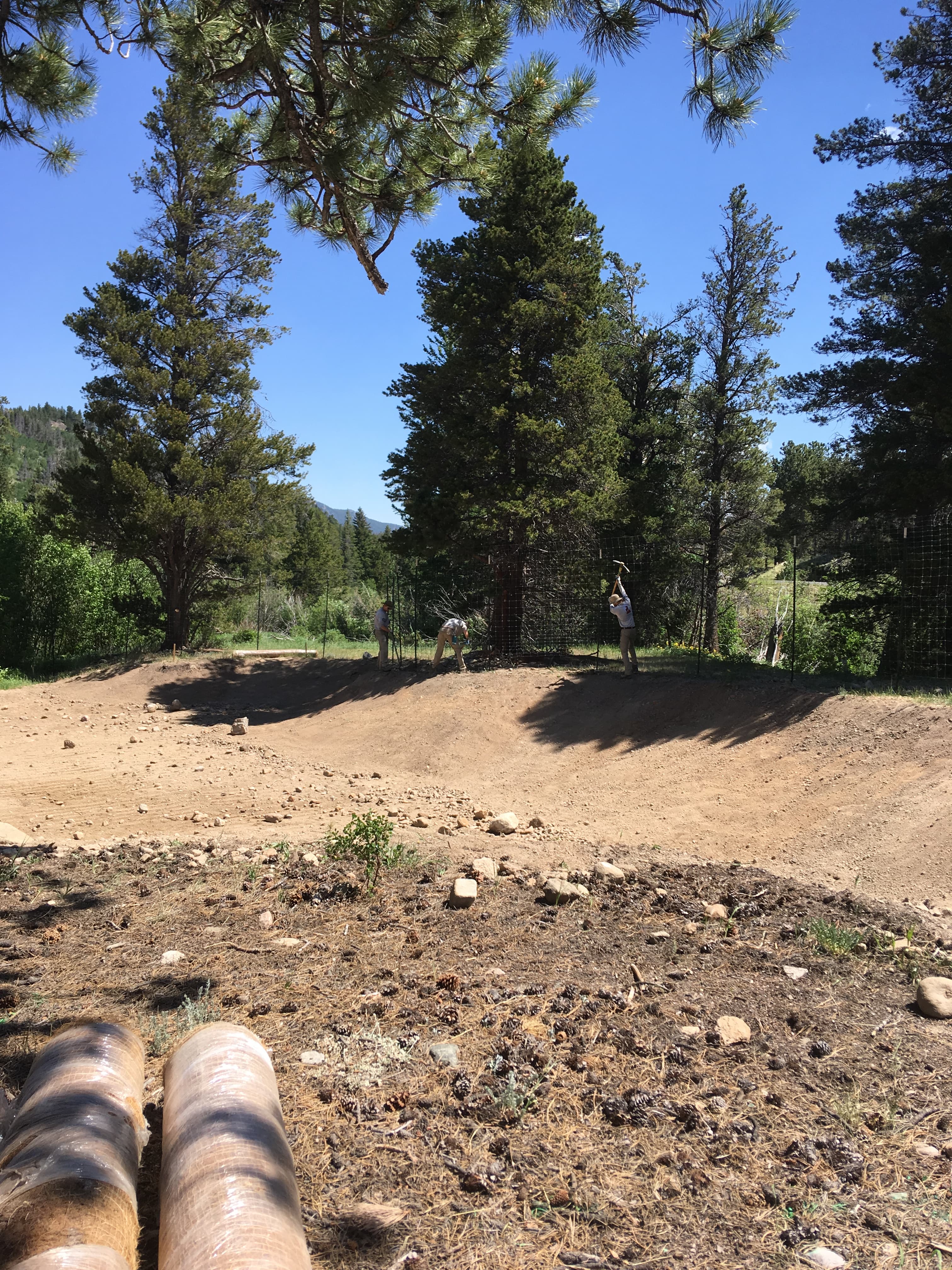
We then began to lay out the erosion blanket, cutting it to perfectly match the slope. Laying down the fabric is important because it will allow the seed to grow while being protected from large gusts of wind, storms, and erosion.
The next day, we were finally ready to seed. This consisted of throwing down grass seed across the slope, then going back and raking it. Afterwards the pre-cut erosion blanket was laid down and staked it to the ground. As our crew dug and hammered away, we sang songs that ranged from 50’s bebops to early 2000’s rap music to keep the energy up. Soon our work was finished, and it was time to head home.
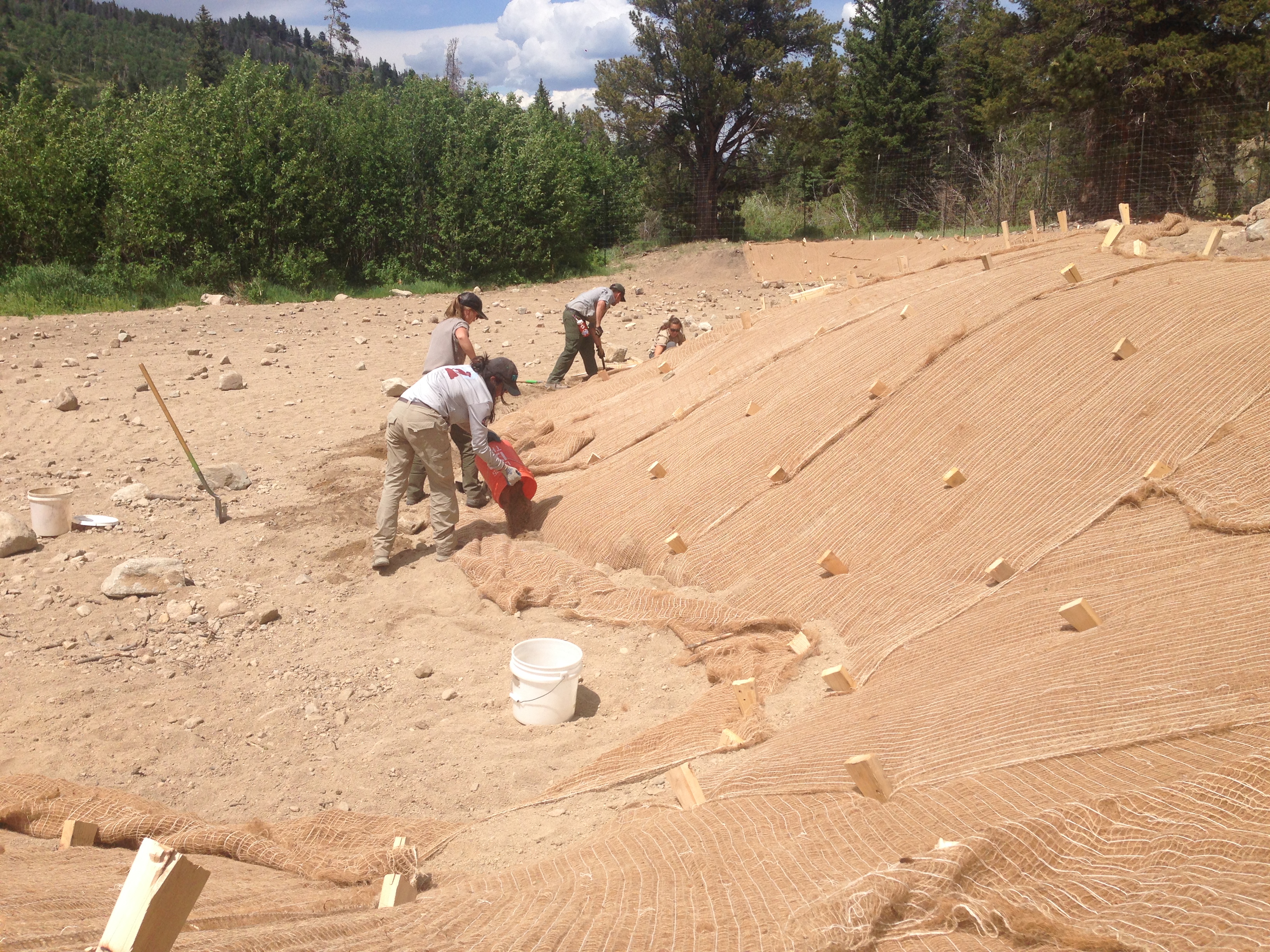
Our time with the vegetation crew was not only educational, but enjoyable; we cannot wait to see them again!
-Cora Starke (Estes Crew Member)
Moraine Crew
This past week, the work of the Moraine crew shifted. The second week of the season has come to a close and crew members are beginning to settle into their roles within the project shop and are looking forward towards their future projects. Mothballing, the picnic-table restoration, and housekeeping business of the previous week is wrapping up. This past week’s work was split between a preservation project at the famous McGraw Ranch on Monday/ Wednesday and a Park Service orientation for fresh-faced seasonal employees on Tuesday.
The McGraw Ranch, originally homesteaded in 1884, was transformed from a cattle/dude ranch to the Continental Divide Research Learning Center after its 1988 acquisition by the National Park Service. Now accommodating field scientists and researchers, the site strives to maintain its original architecture and facilities. The Moraine Crew this week helped to further this tradition through the restoration of original windows by using historically accurate preservation techniques. On Monday the crew removed and began stripping the old crumbling paint from the windows, green on the removable storm window and white on the window on the house. It takes a lot of time and patience to first find all the loose paint bits to remove, and give an even coat all while avoiding the original log work millimeters away from some section. We got about 1/5th of the house done after Wednesday, and that is a success considering there are about 35 windows on the house! We’re not too upset about spending more time out at the McGraw Ranch later in the summer. This new paint will prevent the original windows from rotting away and preserve the original structure of the building.
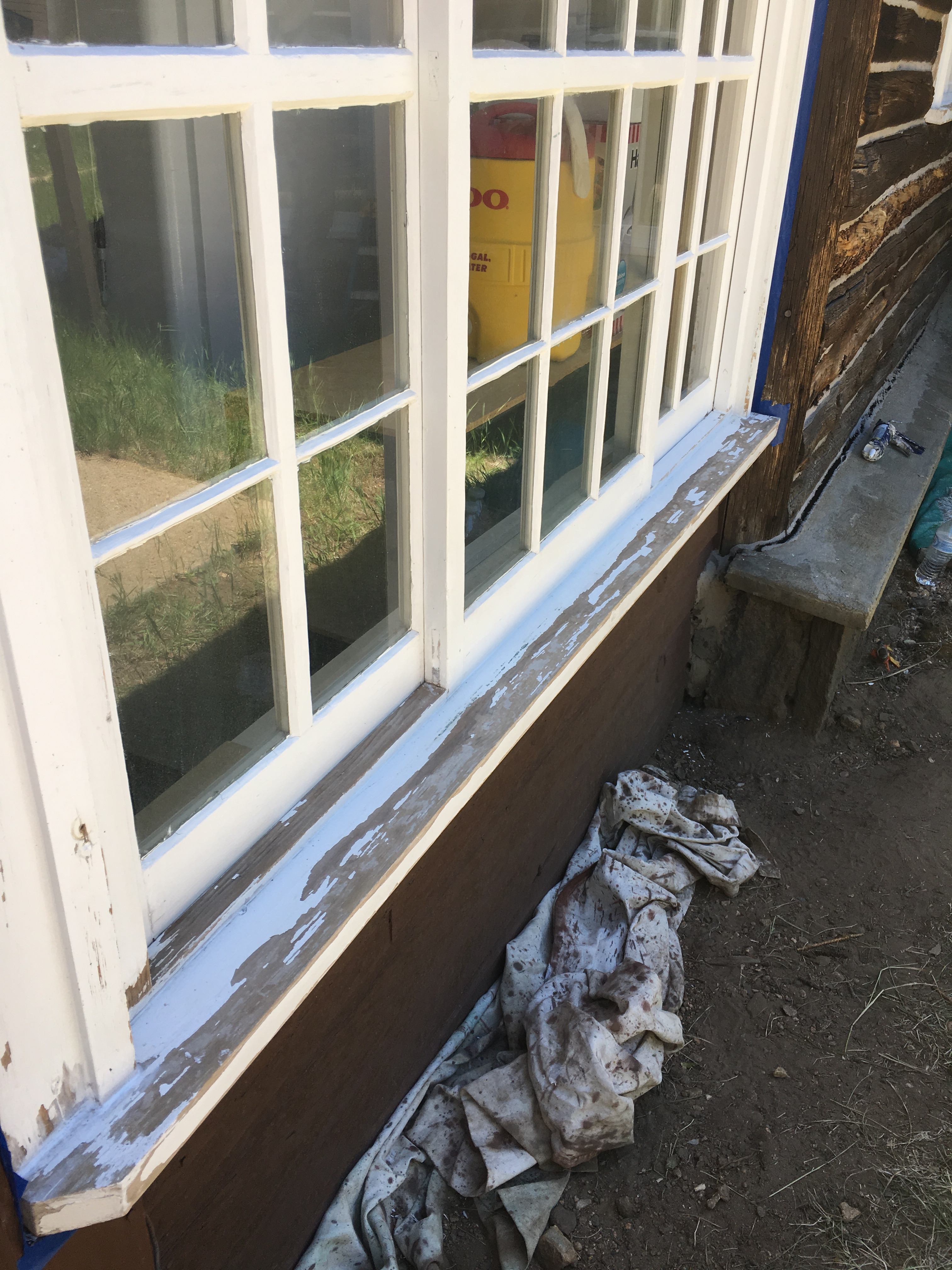
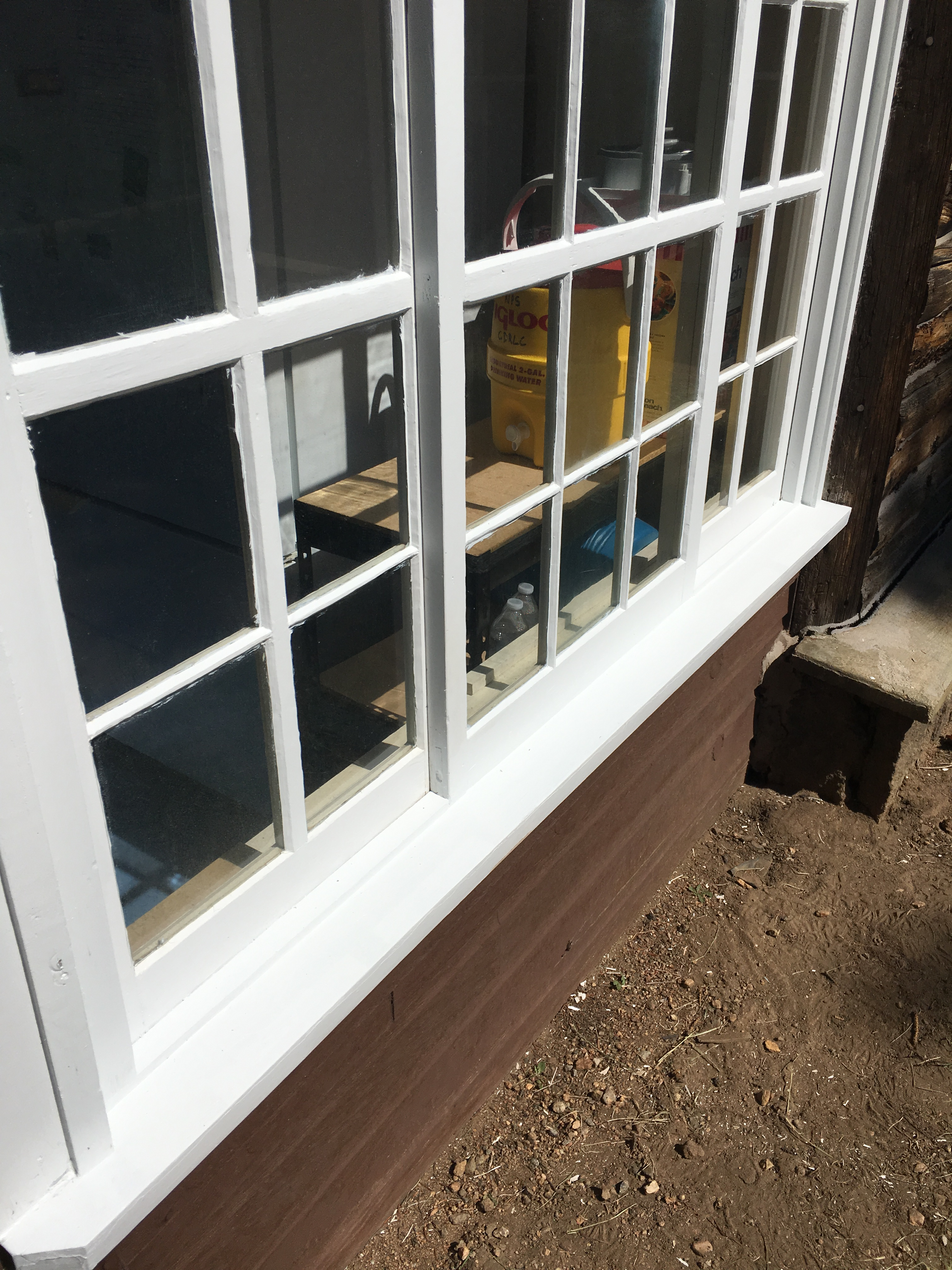
The NPS orientation on Tuesday also proved to be enlightening and educational, as the crew was introduced to the rich history and wide scope of Park Service operations. Presentations by employees and a tour of NPS facilities highlighted a sense of community and pride from regular public land stewards and extended the sentiment out to those working under more temporary circumstances. We also got randomly assigned seating and were able to talk to other employees such as interpretive rangers, law enforcement, and climbing rangers to name a few. This helped us see a lot of different opportunities and potentials niche in the NPS.
The crew ended their week with an exciting look forward. Thursday morning began with a briefing of upcoming projects and safety meetings exploring the potential hazards of each. Crew members showed enthusiasm towards their future work constructing Solar Showers and replacing sill-logs at Glacial Basin Ranger Station, and were quick to key in on safety concerns, as both projects require heavy machinery and face the potential for unwanted interference by a curious public. After this the crew split up with Randy, Hayley and Max finishing redwood staining while Barnabas and Anna went to continue striping windows but at a new location. While all this was going on Thursday, Will had to remain home because he had a severe case of dehydration that had onset through the week, but is following proper rehydration recovery and will be back to work on Monday!
-Will (Moraine Crew Leader)
Shadow Mountain Crew
Our first full week of work brought us just a few minutes down the road from Shadow Mountain to Roaring Fork. First spike of the season; what better occasion to pull out the cross-cut saws and clear some trails. I personally still prefer my silky.
Footnote 1: “Silky” is code talk for a much more compact hand saw.
Before we settled at camp, we spent that Wednesday limbing and bucking an armada of trees at another site further away; a great precursor to what would soon be the great war against tree pollen, saw dust, and sap. We are still fighting.
Wednesday came and went before we knew it, a hard day of work indeed, but a productive one. We all made it safely to our camp site that evening and had a restful night. Well, almost all of us. Poor Ric forgot his sleeping bag at the house and was shivering his tail off all night. Bruce didn’t do a great job of keeping him warm either.
Footnote 2: Bruce is our mint-green, F-250 pickup truck.
Rumor is he will be retired at the end of the season. He’s an old dog, but he’s been treating us well thus far. Any who, Niko was gracious enough to swing by the house and grab Ric’s sleeping bag when she went back to the village with Amy to pick up the llamas. You heard right, we have llamas, two of them to be exact. Kuzco and Kuzco. I can’t remember their legal names for the life of me. They are informally known as Two Socks and Oreo, and we make them carry our tools. Poor things don’t get paid. Emma made us a kick a** dinner Wednesday evening.
Rise and shine bright and early Thursday morning, 7 am. It was about a two-mile hike in before we started emerging from our cocoons as young sawyers with our crosscuts. The two miles turned into what seemed like four miles as we progressed further down the trail. The week was incredibly hot, and my forehead had never swam in so much perspiration, but I do enjoy wearing those hard hats. They make me feel invincible with my boots, eye-pro, and ear-pro.
Footnote 3: “Pro” is short for “protection.”
Those crosscut saws are bad to the bone, they can cut through anything. It is imperative we take care of them though, as they are the last of their kind. Pretty cool feeling using those saws; almost like handling a living relic that’s still got a lot of life in it. Our great leader, Mary, cooked us a kick a** dinner Thursday evening. Ric slept nice and warm this time. The two of us heard some strange animal right outside our tent in the early hours of Friday morn. It may have just been Emma very aggressively blowing her nose, who nose..
By Friday, I had already lost track of how many trees we’ve cut. At this point, our crew is close enough to plan each other’s weddings and openly talk about our grandest poops. No footnote needed for that last word, you read correctly. I thought the week would never end, ten hours of manual labor a day takes a lot out of you. It was a great time though, and I cannot wait to pick up where we left off come this Tuesday. Hard work is good work. We’ve gotten a lot done, and there is still much to be done. We are stewards of the land, and I am sure I speak for my crew when I say that it is an honor doing what we do.
So, Caitlin decided to drive us back Friday evening. As I recall Thursday morning, I remember all the flowers we observed on our hike, and how the kinds of flowers changed as we hiked higher up the trail. The first were pink. “Pretty pink flowers, that’s the technical term for them isn’t it?” said Kendra.
Footnote 4: “Pretty pink flowers” is slang for Yellow alpine saxifrage (Saxifraga serpyllifolia), or simply, wild roses.
-Adam (Shadow Mountain Crew Leader of the Week)
